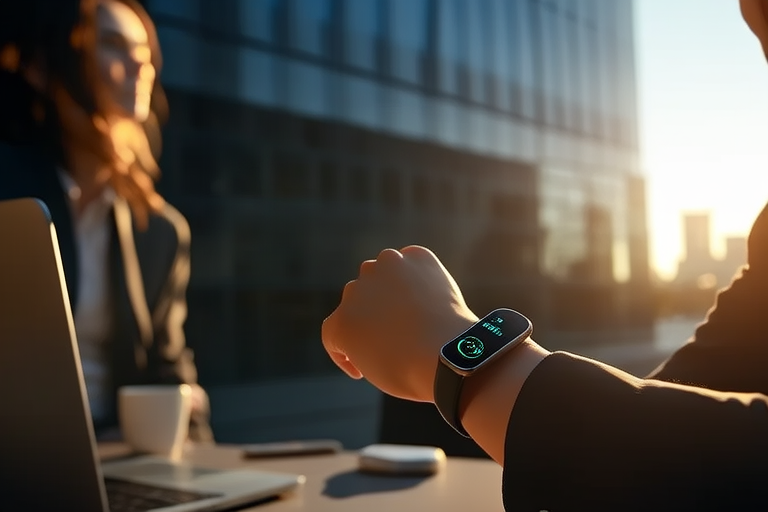“`html
How Wearable Technology is Revolutionizing Health Monitoring
Introduction
Wearable technology refers to electronic devices that can be worn on the body, often integrated into clothing, accessories, or directly onto the skin. These devices have become increasingly popular over the past decade, driven by the growing importance of health monitoring in our lives. From tracking daily steps to monitoring vital signs, wearable devices have become indispensable tools for personal health management. As people seek to live healthier lifestyles and manage chronic conditions more effectively, these gadgets offer an accessible and convenient solution.
Evolution of Wearable Technology
The journey of wearable technology began with simple pedometers, which were primarily used to count steps. Over time, these devices evolved into more complex fitness bands and smartwatches capable of monitoring various aspects of health. Key milestones include the introduction of heart rate monitors, GPS tracking, and sleep analysis. Innovations such as Bluetooth connectivity and cloud-based data storage have further enhanced the functionality of these devices. These advancements have laid the groundwork for even more sophisticated health monitoring features, making wearable technology an essential tool for both personal fitness enthusiasts and medical professionals.
Key Features of Modern Wearables
Modern wearables come equipped with a range of features designed to provide users with detailed insights into their health. Common features include:
- Heart Rate Monitors: These sensors continuously measure heart rate, providing valuable data on cardiovascular health.
- Sleep Trackers: These tools analyze sleep patterns, offering insights into the quality and duration of sleep.
- Blood Oxygen Sensors: These sensors measure the amount of oxygen in the blood, useful for detecting respiratory issues.
- ECG Monitors: Some advanced wearables can perform electrocardiograms, helping detect arrhythmias and other heart conditions.
For example, the Apple Watch Series 7 includes an ECG app and irregular rhythm notification feature, while Fitbit devices offer comprehensive sleep tracking and heart rate variability analysis.
Applications in Health Monitoring
Wearable technology plays a crucial role in managing chronic conditions. Devices can monitor glucose levels for diabetics, track blood pressure for those with hypertension, and monitor breathing patterns for asthma sufferers. These tools enable patients to stay proactive about their health, often identifying issues before they escalate into serious problems.
Preventive care is another area where wearables excel. By providing continuous health data, these devices help individuals understand their baseline health metrics and recognize any deviations. For instance, a sudden spike in heart rate or a drop in blood oxygen levels could indicate a developing issue that requires attention.
Real-world examples demonstrate the significant impact of wearable tech on patient outcomes. In one study, patients with atrial fibrillation who wore smartwatches experienced earlier detection of arrhythmias, leading to timely interventions and improved health outcomes.
Privacy and Data Security Concerns
Despite the benefits, there are valid concerns about privacy and data security. Wearable devices collect sensitive health information, raising questions about how this data is stored and shared. Manufacturers must take robust measures to protect user information, such as encrypting data and implementing strong authentication protocols.
Consumers can also take steps to safeguard their data. This includes reviewing privacy policies, enabling two-factor authentication, and regularly updating device software. It is essential for users to remain vigilant and informed about the risks involved when using these devices.
Future Prospects
The future of wearable technology looks promising, with ongoing advancements in areas such as artificial intelligence (AI) and machine learning (ML). These technologies will allow wearables to provide even more personalized health insights and predictive analytics. For instance, AI algorithms could analyze health data in real-time to predict potential health crises before they occur.
Medical diagnostics may also see significant improvements thanks to wearables. Devices capable of non-invasive blood tests or continuous glucose monitoring could revolutionize how we approach healthcare. However, the widespread adoption of these technologies raises ethical considerations, particularly regarding data ownership and consent.
Conclusion
In conclusion, wearable technology is transforming the landscape of health monitoring. From basic step counters to advanced diagnostic tools, these devices offer unprecedented opportunities for individuals to take control of their health. As the technology continues to evolve, it promises to play an even more critical role in preventive care and medical diagnostics. While there are challenges related to privacy and data security, the benefits of embracing these innovations far outweigh the risks. By staying informed and proactive, users can fully leverage the potential of wearable technology to lead healthier, more fulfilling lives.
“`


